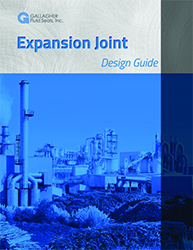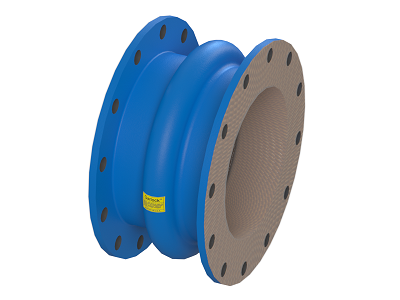Expansion Joint Surveys
Gallagher Fluid Seals is proud to provide the Rubber Expansion Joint Surveys & Failure Analysis white paper to customers, which can be found on our Resources page. This white paper discusses the importance of inspecting your plant’s expansion joints. Proper design and maintenance of rubber expansion joints plays a major role in the overall preservation and lifespan of a piping system.
It also discusses failure analysis of rubber expansion joints and some of the leading causes of joint failure.
Below is an except from the white paper, discussing design and maintenance of rubber expansion joints, as well as the importance of expansion joint surveys.
Elastomeric expansion joints are fabricated from natural or synthetic rubber and fabric, normally consisting of an inner elastomeric tube fused to a metal-reinforced fabric body and an elastomeric cover. These expansion joints accomodate greater pipe movement and provide greater abrasion resistance than metal expansion joints.
The proper design and maintenance of rubber (or elastomeric) expansion joints plays a major role in the overall preservation and lifespan of a piping system. They absorb movement, relieve system strain due to thermal change, stress, pumping surges, wear, or settling, reduce mechanical noise, compensate for misalignment, and/or eliminate electrolysis between dissimilar metals.
Poorly functioning joints can lead to major deterioration of the piping system’s integrity, creating safety and environmental issues in your plant and processes. Visible signs of wear and fatigue - including exterior surface cracking, blistering, deformation and delamination, exposure to metal or fabric reinforcement, ply separation of the cover, rubber deterioration, and leakage - can alert observant users to potential failure.
When expansion joints are designed, applied, and installed correctly, it is not unusual to achieve a service life of 15-20 years in most industrial applications. Read on to see what our partners at Garlock had to say about troubleshooting in order to expand the life expectancy of nonmetallic expansion joints.
“A robust preventative maintenance program for elastomer expansion joints can improve both plant safety and the mechanical integrity of equipment,” said Garlock’s Sherwin Damdar and Stephen Cramb. “Such a program includes a comprehensive, systematic survey of all expansion joints, stocking the proper types and levels of inventory, periodic follow-up inspections, analysis of prematurely failed joints, and ongoing training for plant personnel. ”
How Important are Surveys?
Expansion joint surveys can prevent premature failures, which can cost even more than replacing joints. A survey should gather relevant data for each joint: location, orientation, inside diameter, face-to-face dimensions, as well as any offset or misalignment and the style and general condition of each joint. Depending on the condition, the joint should either be replaced right away or marked for re-inspection in six months.
The survey should include both joints in service as well as the ones in inventory. By inspecting the inventoried joints, you can be sure you have the proper type and sufficient number of spares, and that the manufacturer’s shelf life has not expired. Put a summary of all the expansion joints into a single document.
“After the initial survey has been conducted, all expansion joints should be reinspected, ideally prior to planned shutdowns or scheduled maintenance,” Cramp and Damdar write. “Those exhibiting signs of wear can then be replaced from inventory and restocked. Replacing failed or damaged expansion joints not only protects the piping systems in which they are installed, but also provides critical information regarding system conditions at their locations.“


